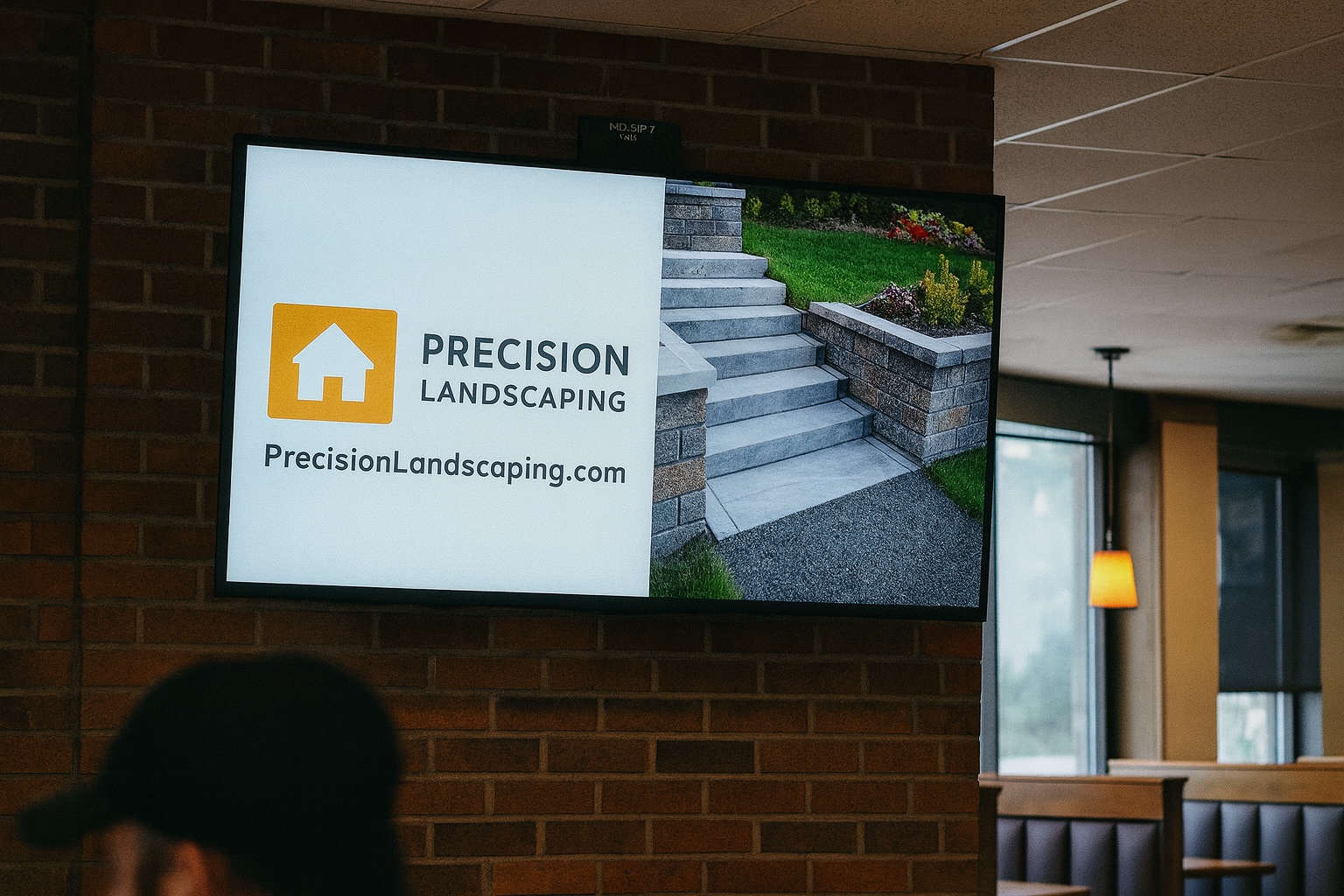What Makes DOOH Different
DOOH works in the real world. The screens are placed where people spend time every day -> grabbing coffee, eating lunch, working out, or waiting in line.
These ads don’t compete with endless scrolling or pop-ups. They exist naturally in the space, which means the viewer’s attention isn’t split between dozens of other posts.
When someone sees a local plumber or restaurant on a screen inside their favorite spot, it feels part of their environment, not an interruption. That difference in context changes how people absorb and remember the message.
Attention Retention
One of the biggest differences between DOOH and social media ads is attention.
Online, people scroll quickly. Studies show that the average person spends only a few seconds on each post. Even if your ad looks great, it’s surrounded by hundreds of others.
In DOOH, there’s no competing feed. A person might look up while waiting for their coffee and see your ad several times in a single visit. Because they’re in a slower, real-world setting, they naturally take in more detail.
The message has time to land.
And since the ad plays repeatedly throughout the day, it quietly builds familiarity, something that’s harder to achieve in the fast pace of social media.
Building Trust
Trust works differently too.
On social media, users know they’re being targeted by algorithms. Many scroll past ads automatically or block them without even thinking. Online ad fatigue is real.
DOOH ads, on the other hand, are public and transparent. They’re shown in spaces people already trust. Seeing a local business advertised there adds a sense of credibility. It’s like word-of-mouth in visual form.
When an ad appears in a familiar space, it feels endorsed by the venue itself. That connection builds trust without any extra effort from the advertiser.
Frequency and Familiarity
Marketing often comes down to repetition. People rarely buy the first time they see an ad. They respond when they’ve seen a message several times and it starts to feel familiar.
Social media ads can reach someone often, but only if you keep paying for impressions. Once the campaign stops, the exposure often disappears instantly.
With DOOH, frequency happens naturally. Ads repeat all day in the same locations, reaching the same local audience again and again. Over time, that repetition turns awareness into memory.
It’s the same reason you remember the jingle from an old TV commercial. Steady exposure builds recognition.
Cost and Control
Social media gives you tight control. You can adjust audience age, interests, or zip code. But this control can also become a trap, constant testing, changing budgets, and chasing clicks.
DOOH is simpler. You pick your venues, your business ad gets uploaded, and let it run. The audience is whoever visits that space, which in many cases is exactly who you want, local people living and working nearby.
You also avoid the rising costs of online bidding systems, where prices climb as more advertisers compete for the same attention.
How They Work Together
This isn’t an “either-or” choice. Smart businesses use both.
Social media is great for fast engagement and direct links. DOOH is better for visibility and credibility in the real world.
Together, they form a loop: someone sees your ad on a local screen, later recognizes your brand online, and finally clicks through because they already know your name.
That’s the power of combining physical presence with digital reach.
A Local Example
Across the Fraser Valley, digital screens are appearing in places where people gather every day. Businesses can show their brand on these indoor billboards while also running social campaigns online.
At Gand1 Media Solutions, we help local companies use DOOH to stay visible in their community. When customers see a business on both a café screen and their social feed, it creates a feeling of trust and familiarity that online ads alone can’t match.
In summary:
Social media ads chase attention in fast digital spaces. DOOH earns attention naturally in real places. One happens on a screen in your hand. The other lives in the spaces where your customers already are.
Both matter, but when used together, they help your business thrive and be more recognized within your operational zone.
%20(1920%20x%201080%20px)%20(1).avif)

.avif)
.avif)

